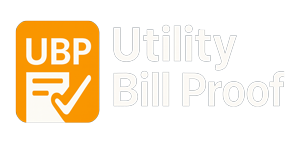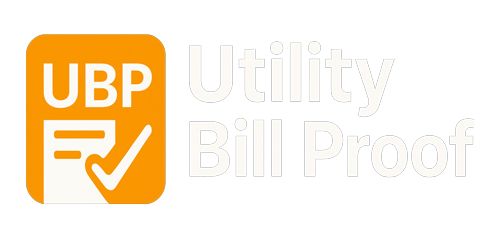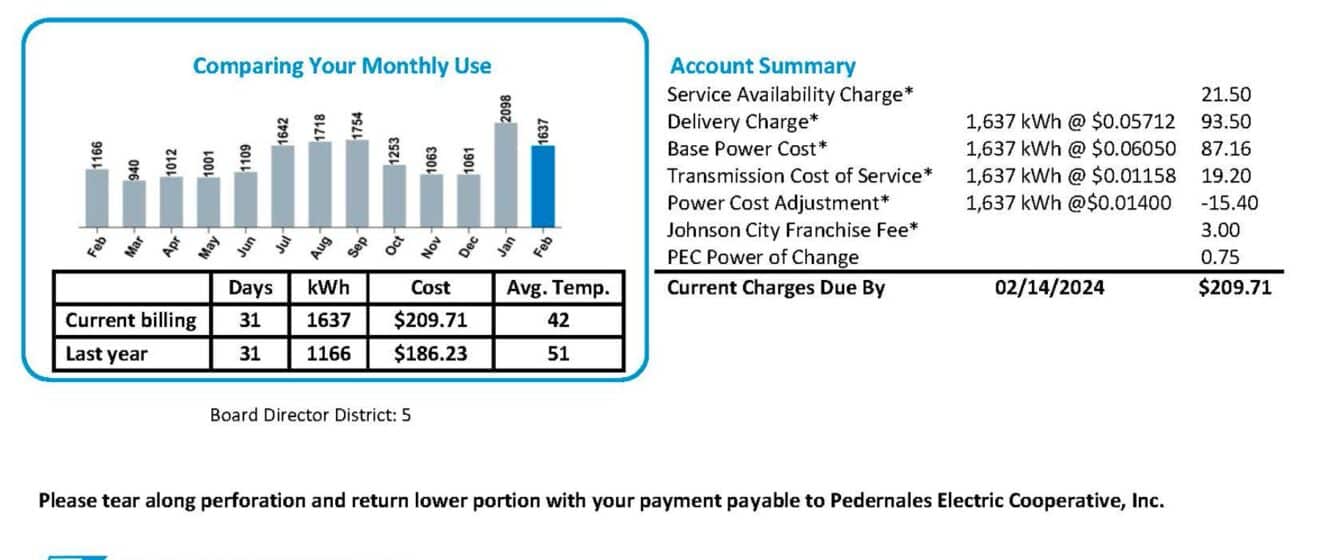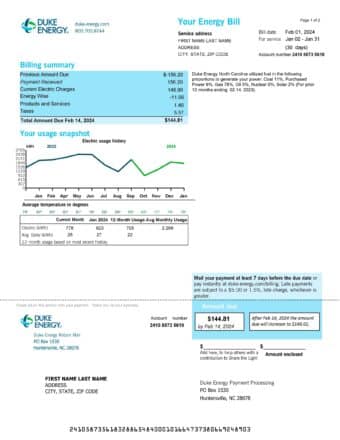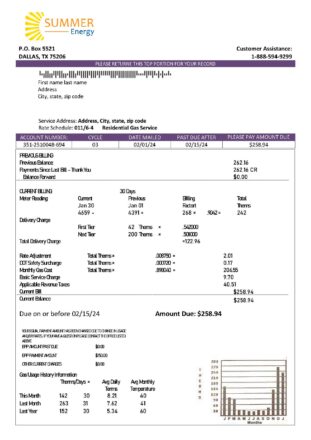Managing utility bills effectively can make a significant difference in your financial planning and peace of mind. Whether you’re a homeowner tracking monthly expenses, a renter splitting utilities with roommates, or a small business owner managing multiple accounts, understanding how to properly edit and maintain utility bill records is crucial. Recent studies show that nearly 30% of consumers have experienced billing errors, yet many lack the knowledge and tools to address these issues effectively. From correcting simple calculation mistakes to updating account information, the ability to edit utility bills professionally can save you time, money, and unnecessary stress.
Key Takeaways:
- Master essential bill editing tools and software that ensure accuracy while maintaining document integrity
- Learn proven step-by-step methods for editing electricity, gas, and water bills without compromising legal compliance
- Discover professional techniques for preventing common errors and implementing effective billing management systems
- Access practical templates and guides designed for both personal and business utility management needs
Why Edit Utility Bills?
Benefits of Editing Bills
Ensuring Accuracy
Imagine discovering a misplaced decimal point that made your utility bill ten times higher than it should be. This scenario isn’t uncommon – a recent analysis found that approximately 7% of utility bills contain errors that could cost consumers hundreds or even thousands of dollars annually. When editing your utility bill records, you’re not just organizing paperwork; you’re protecting yourself from costly mistakes. Consider Sarah, a small business owner who caught a billing error that had been compounding for months, saving her company over $2,000 annually simply by maintaining accurate records and regularly reviewing her bill
Financial Savings
Strategic edit bill management can lead to substantial cost reductions beyond error correction. Studies show that households actively monitoring their utility bill patterns save an average of 12-15% on annual utility costs. By creating a systematic approach to reviewing and editing bills, you can identify unusual spikes in usage, detect seasonal patterns, and make informed decisions about your consumption habits. For example, comparing winter heating bills over multiple years can reveal opportunities for insulation improvements or equipment upgrades that reduce long-term costs.
Energy Efficiency Insights
Reviewing your electricity bill and gas bill data provides valuable insights into your energy consumption patterns. When homeowners track their usage through careful bill monitoring, they typically discover opportunities for 20-30% reductions in energy use. For instance, analyzing monthly electricity bills might reveal that your air conditioning usage peaks during certain hours, leading to simple adjustments in thermostat settings that can significantly reduce costs. This systematic approach to bill analysis not only saves money but also promotes more sustainable energy practices.
Common Reasons to Edit
Correcting Errors
A bill in editing process often reveals common discrepancies that require immediate attention. The most frequent issues include meter reading errors, which account for 35% of billing mistakes, followed by calculation errors at 28%, and duplicate charges at 15%. Using standardized templates helps identify these issues systematically – for instance, a well-designed spreadsheet can automatically flag unusual variations in usage patterns or highlight mathematical inconsistencies. This proactive approach to error detection can prevent the accumulation of overcharges and ensure your utility payments accurately reflect your consumption.
Updating Information
Life changes often necessitate the need to edit utility bill information. Whether you’re relocating to a new address, changing your name after marriage, or updating contact details, maintaining accurate account information is crucial. For example, when James relocated his small business, he needed to update multiple utility accounts simultaneously. The process typically requires submitting formal documentation to your provider, including proof of identity and address verification. Most utility companies now offer online portals where you can efficiently manage these updates while maintaining a clear record of all changes.
Resolving Disputes
When disagreements arise over charges or services, proper edit documentation becomes your strongest ally. Start by gathering all relevant bills, payment records, and correspondence with your provider. Create a detailed timeline of events and maintain copies of all communications. For instance, if you notice unexpected surge charges, photograph your meter readings regularly and keep dated records. This systematic approach has helped consumers successfully resolve up to 82% of billing disputes in their favor. Remember to remain professional and factual in all communications, focusing on documented evidence rather than emotional arguments.

Tools and Techniques for Editing Utility Bills
Popular Digital Tools
Adobe Photoshop
As a professional bill editor, Photoshop offers precise control over digital utility records through its advanced toolkit. The software excels at processing scanned bills through its Smart Object technology, which preserves original quality while allowing edit bill modifications. To edit a scanned utility bill, start by importing the document as a high-resolution image (minimum 300 DPI). Use the Text Tool for adding or correcting information, and leverage adjustment layers for enhancing readability. The Content-Aware Fill feature proves invaluable for removing artifacts or unwanted elements while maintaining document integrity. However, note that Photoshop’s learning curve and subscription cost may exceed the needs of casual users managing simple billing tasks.
PDF Editors
Modern PDF editors have revolutionized the process of editing your utility documentation. These tools combine optical character recognition (OCR) technology with intuitive interfaces, making them ideal for routine bill management. Leading solutions like Adobe Acrobat DC and UPDF offer robust features including text editing, form field creation, and digital signature integration. The key advantage lies in their ability to maintain document formatting while allowing necessary modifications. Consider factors such as processing speed, batch editing capabilities, and mobile accessibility when selecting a PDF editor. Most platforms now include cloud storage integration, enabling secure backup of your utility records.
How to Choose the Best Tool for Your Needs
Skill Levels
Selecting the right editor requires careful consideration of your technical expertise. Beginners typically benefit from intuitive platforms like UPDF or DocHub, which offer straightforward interfaces and guided workflows. These tools provide essential editing capabilities without overwhelming users with complex features. In contrast, professionals managing high volumes of utility documentation might prefer advanced solutions like Adobe Acrobat DC, which offers automation capabilities and batch processing. Consider your comfort level with technology and the time you’re willing to invest in learning new software – the most sophisticated tool isn’t always the best choice if it hampers your productivity with a steep learning curve.
Document Type
Understanding your utility document formats is crucial for selecting appropriate editing tools. Paper bills require software with robust scanning capabilities and accurate OCR (Optical Character Recognition) technology. Digital native PDFs, however, can be handled by simpler editing platforms. For example, when working with scanned historical bills, tools like UPDF excel at converting image-based text into editable content while preserving formatting. Consider whether you’ll primarily handle electronic statements or need to process physical documents regularly – this distinction significantly impacts which features you’ll need most frequently.
Specific Features
Managing utility bills effectively requires tools with particular capabilities that streamline your workflow. Essential features include cloud storage for secure backup, multi-device synchronization for accessibility, and automated data extraction for efficiency. Consider scenarios where you might need to process multiple bills simultaneously or share documents with accountants or property managers. Look for tools offering batch processing capabilities, collaborative editing features, and comprehensive search functionality. The ability to create templates for recurring modifications can save significant time, especially when handling monthly utility statements across multiple properties or accounts.
Templates for Utility Bill Editing
Bill Tracking Templates
Effective utility bills management starts with robust tracking systems. Modern tracking templates incorporate automated notification systems for payment deadlines and usage alerts when consumption patterns change significantly. These digital worksheets typically feature color-coded status indicators, payment verification columns, and historical comparison tools. For instance, a well-designed tracking template can automatically flag unusual increases in consumption, helping identify potential leaks or billing errors before they become costly problems. Many templates now integrate with popular financial apps and cloud platforms, enabling real-time updates and automated backup of your utility records.
Budgeting Templates
To effectively edit utility bill information and plan expenses, comprehensive budgeting templates prove invaluable. These tools typically include sections for fixed versus variable costs, seasonal adjustment factors, and projected usage patterns. A well-structured template might divide expenses into categories like peak and off-peak usage, helping identify opportunities for cost reduction. For example, a household using a detailed budgeting template discovered they could save 23% on their annual utility costs by shifting energy-intensive activities to off-peak hours. The most effective templates include visualization features that transform complex billing data into actionable insights.
The evolution of utility bill management tools and templates has transformed how we handle household and business expenses. From sophisticated tracking systems to comprehensive budgeting solutions, these resources empower users to maintain accurate records while identifying opportunities for cost savings. Modern digital templates not only simplify the editing process but also provide valuable insights into consumption patterns and potential areas for improvement.
Looking ahead, consider implementing these tools as part of your regular financial management routine. Start with basic tracking templates and gradually incorporate more advanced features as your needs evolve. Remember that the most effective system is one that you’ll use consistently – choose templates that match your technical comfort level while meeting your specific utility management needs.
